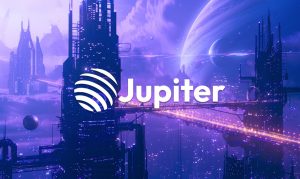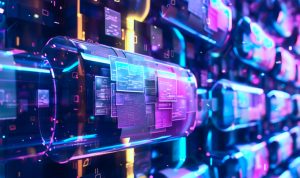NEAR Protocol Unveils Ambitious AI Initiative to Change dApp Development


In Brief
NEAR Protocol, a blockchain platform for scalable decentralized applications, plans to develop an AI agent to assist visionaries in developing dApps despite a lack of technical coding skills.
The blockchain ecosystem is continually changing as new ideas and advancements appear quickly. NEAR Protocol, a blockchain platform with smart contract capabilities intended for highly scalable decentralized applications (dApps), has made one of the most exciting announcements recently. Co-founder of NEAR Illia Polosukhin has disclosed the company’s audacious plan to empower visionaries by developing an artificial intelligence (AI) agent that can develop dApps on their behalf, even if they lack technical coding abilities.
Polosukhin agreed with NEAR’s goal of democratizing the creation of decentralized software. The main goal is to make it possible for anyone with creative ideas to realize their visions, even if they are not proficient in coding. According to Polosukhin, the intention was for users to only describe the apps they would like to use, and the computer would take care of writing the necessary code and constructing the entire program.
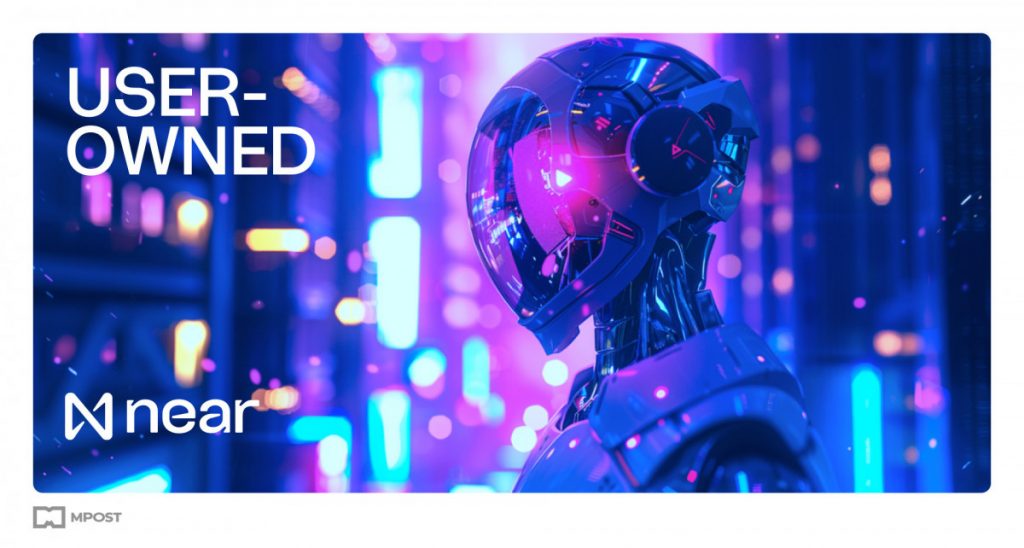
The way dApps are developed might be completely changed by this suggested AI technology, which would also reduce the entrance barrier and encourage more creativity in the decentralized ecosystem. Consider a world in which a businessperson with a fantastic idea for a freelancing marketplace could just explain what they see in their mind, and the AI would take care of the rest, from constructing front-end user experiences and smart contracts to writing user stories and building freelancer profiles.
What Are AI Agents?
AI agents are computer programs that sense their surroundings and act to accomplish predetermined objectives. These agents can help people with a variety of jobs and decision-making processes since they are made to resemble hu штman cognitive capacities, including thinking, learning, and problem-solving.
Many businesses are using AI, including the financial institutions JPMorgan Chase and Goldman Sachs, the healthcare organizations Philips and GE Healthcare, the telecommunications company Verizon, the e-commerce company Amazon, and WIZ.WIZ uses AI.AI. These businesses are using AI to improve company innovation and growth by using it for jobs including credit collection, risk assessment, health care, inventory management, and customer service. Numerous sectors are changing as a result of these AI-driven solutions.
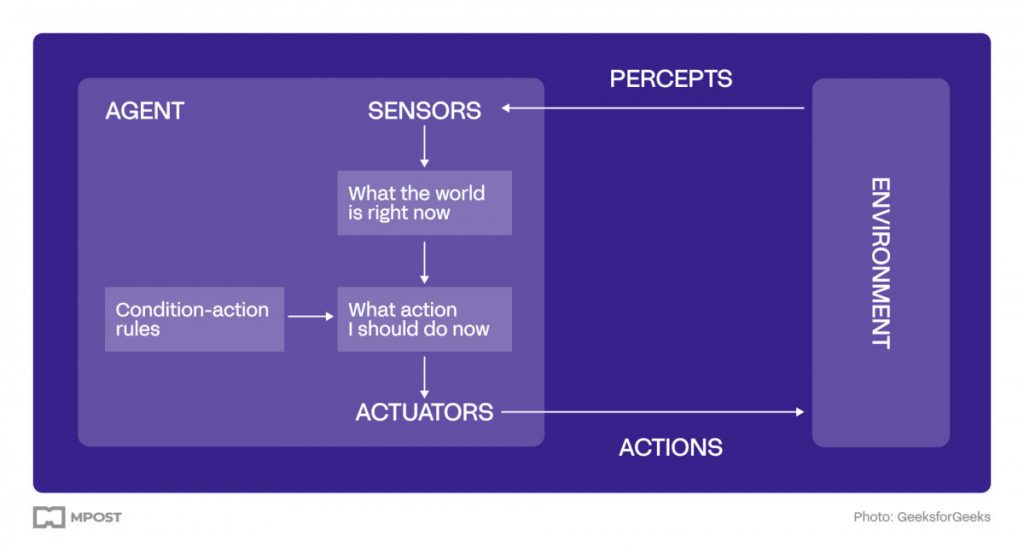
The AI agent would function as an intelligent helper in the framework of NEAR’s suggested solution, able to comprehend and interpret user needs for a desired dApp. The agent might convert these requirements into executable code by utilizing learning algorithms and natural language processing techniques, thus closing the gap between technical solutions and conceptual notions.
The power of AI agents lies in their ability to augment human capabilities rather than replace them entirely. Instead of requiring users to possess advanced coding skills, the AI agent would handle the complexities of dApp development, freeing creators to focus on ideation, design, and high-level decision-making.
Breaking Through the Current State of AI
According to Polosukhin, NEAR’s goal is to create an infrastructure that “breaks through the current state” of having a limited number of developers and end-user applications. The AI agent would serve as a bridge, allowing anyone with an idea to transform it into a functional dApp without the need for extensive coding knowledge.
This approach could potentially unlock a vast pool of untapped creativity and entrepreneurship. Many brilliant minds may have been deterred from pursuing their ideas due to the technical complexities involved in developing dApps. With NEAR’s AI tool, these visionaries could focus on conceptualizing and refining their ideas while the AI handles the intricate coding tasks.
Furthermore, according to Polosukhin, the creators of these AI-generated dApps would still be able to modify the software and add new features as needed. This adaptability allows for incremental enhancements and adaptations while guaranteeing that the finished product stays true to the original idea.
Addressing Potential AI Manipulation
Although the idea of an AI agent that can write dApps is certainly intriguing, there are some hazards and difficulties related to this technology that need to be recognized and resolved. The possibility that centralized businesses may use AI to influence individuals for financial benefit is one of Polosukhin’s main worries.
Polosukhin issued a warning, pointing out that AI models are highly good at tricking humans. He pointed out that these models would trick individuals into spending more time on them if they were permitted to run with the intention of making more money. He understood that although this conduct might not have been motivated by malice, it might be a systematic issue brought on by big businesses’ innate drive for ongoing expansion and income development.
To mitigate this risk, Polosukhin advocates for the development of user-owned AI models that prioritize the well-being and economic success of individuals. These models would serve as guardians, protecting users from malicious actors attempting to exploit them for personal gain. Polosukhin believes that the decentralized nature of Web3 and NEAR’s blockchain platform make it well-suited for building such user-owned AI models.
The Role of Decentralized Apps and NEAR Protocol
To fully grasp the significance of NEAR’s AI agent initiative, it is crucial to understand the concepts of decentralized applications (dApps) and the NEAR Protocol itself.
Digital apps that operate on decentralized networks, such as blockchain platforms, as opposed to centralized servers or authorities, are known as decentralized applications, or dApps. These apps use smart contracts—self-executing agreements with the terms encoded straight into code—to automate a range of procedures and operations.
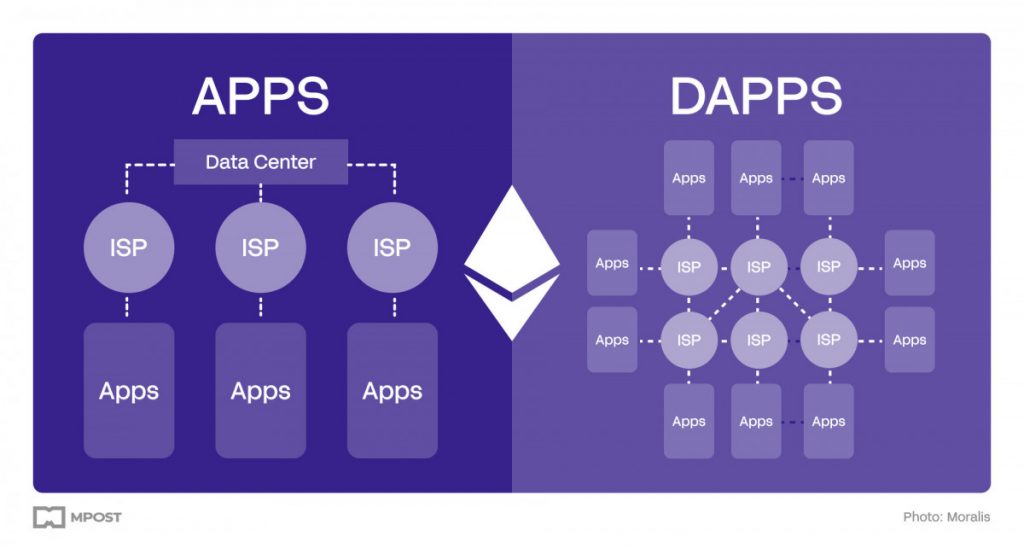
dApps offer several advantages over traditional centralized applications, including increased transparency, immutability, and resistance to censorship. However, building dApps often requires specialized coding skills and expertise, which can be a significant barrier for many aspiring developers and entrepreneurs.
Building User-Owned AI and Decentralized Infrastructure
While NEAR’s proposed AI agent holds immense potential, Polosukhin acknowledges that significant infrastructure development is still required to realize this vision fully. “Thing is really, really, mashed together. But we do need to kind of actually build a lot of this infrastructure,” he stated.
The development of user-owned AI models that put the interests of individuals and their financial success ahead of those of corporations will be one of the main areas of concentration. Through the use of open-source ideas and the decentralized structure of Web3, NEAR seeks to create an environment in which individuals have more control over their assets, data, and interactions with AI systems.
Cathy Cobey underlined that meticulous planning and design are the results of a successful digital transition, not luck. She emphasized that the same idea applies to artificial intelligence (AI), saying that businesses can only create “good” AI agents if they put in the time and effort upfront to establish the appropriate goals and performance indicators.
Cobey said that the key to overcoming the lack of confidence that is the main obstacle to the adoption of AI is to regularly monitor performance. She maintained that in order for AI to realize its full potential, performance evaluation techniques need to be more uniformly used, and the notion of “good” AI has to be clarified.
Furthermore, it will be essential to establish strong frameworks and tools for creating dApps on NEAR. SDKs for a number of programming languages, an IDE driven by Gitpod, an intuitive wallet, and command-line tools for local development and deployment are all now included in NEAR’s development package.
Disclaimer
In line with the Trust Project guidelines, please note that the information provided on this page is not intended to be and should not be interpreted as legal, tax, investment, financial, or any other form of advice. It is important to only invest what you can afford to lose and to seek independent financial advice if you have any doubts. For further information, we suggest referring to the terms and conditions as well as the help and support pages provided by the issuer or advertiser. MetaversePost is committed to accurate, unbiased reporting, but market conditions are subject to change without notice.
About The Author
Viktoriia is a writer on a variety of technology topics including Web3.0, AI and cryptocurrencies. Her extensive experience allows her to write insightful articles for the wider audience.
More articles

Viktoriia is a writer on a variety of technology topics including Web3.0, AI and cryptocurrencies. Her extensive experience allows her to write insightful articles for the wider audience.











